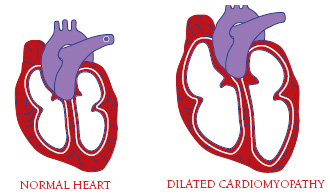
Emery-Dreifuss Muscular Dystrophy (EDMD)
Medical Management
Contractures
Contractures develop early in Emery-Dreifuss muscular dystrophy (EDMD) and can worsen even if muscle strength doesn’t change. Preventing contractures is difficult, but maintaining range of motion with physical therapy may help to slow their development. Surgical release of contractures is challenging because of their tendency to recur.
Cardiac conduction block

Cardiac problems can be life-threatening and may require the insertion of a pacemaker or treatment with medication. Fortunately, the problem is fairly easy to detect with an electrocardiogram. Anyone given a diagnosis of EDMD should be monitored regularly for signs of cardiac conduction block.
Cardiomyopathy
In addition to cardiac conduction abnormalities, many people with EDMD ultimately develop dilated cardiomyopathy, an impairment in the heart muscle’s ability to pump blood around the body because it’s thinned out and floppy (dilated).
Medications can help when the heart is impaired in this way.

